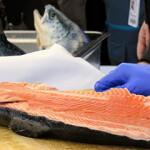Russia likely to limit fishing fleet’s operating life

Russia’s Federal Agency for Fisheries is planning to propose a legislative initiative that would impose a 30-year limit on the service life of the nation's fishing fleet.
The move, set to take into effect in 2033, is needed to enhance safety and increase productivity of vessels, the agency said.
The concept for the proposal to establish a limit is contained in analytical materials for the agency’s annual collegium, a board that analyzes the agency’s – and seafood industry’s – outcomes in the previous year, and sets goals for the current year. The 2020 collegium’s session, initially scheduled for March, has been postponed due to the spread of COVID-19.
Support for the move was voiced by the agency’s top representative during discussions on the industry’s strategic perspectives with market participants. Its primary goal is to reduce the number of incidents at sea and encourage fishing companies to invest in modernizing their harvesting capabilities.
Currently, Russia's fleet is old and in need of updating, according to a fishery conference presentation in the Lower Chamber of the Russian Parliament in late 2019, Interfax news agency reported. Figures in the materials were alarming: The number of vessels in the Russian fishing fleet dropped by a quarter between 2000 and 2018, and, if current trends continue, there may be a deficit of fishing capacity in 2020, which presents a potential stumbling block for Russia to meet its goal of harvesting five million metric tons of seafood a year, the document said.
Russia’s Federal Agency for Fisheries has fully committed to a policy of investment quotas, which provides additional quotas for fisheries in exchange for the construction new vessels built at Russian shipyards or new processing plants built in Russia. At the moment, 43 vessels are now under construction as a result of the program.
But that number is not sufficient to completely tackle the upcoming deficit of capacities caused by the aging fleet, according to the Russia's fisheries regulator. Just 1 percent of large - and medium-sized trawlers in the two main fishery basins in the country are less than five years old, while seven percent are 25 years old or older.
Photo courtesy of Nina Alizada






Share